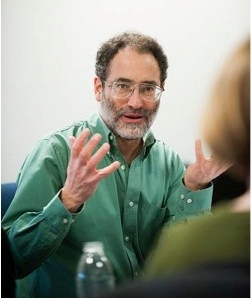14
2019
2020: Ten Trends Affecting Nonprofits
Leap Year 2020 will see a tumultuous Presidential election, $10 billion in election spending, the decennial Census, 100 years of women voting, the summer Olympics in Tokyo, hotly contested Oscars, a thrilling World Series, a Rose Bowl with our new state of Oregon represented and substantial underlying changes in the nonprofit world. Here is what we see coming. 1. Rapid Underlying Change. Underneath a seeming stable overall sector, with slow growth over inflation, there are, and will be substantial underlying changes going on, with many organizations struggling to maintain this outward stability. Major flux will be the norm for many,…
19
2018
2019: Ten Trends Affecting Nonprofits
Article by Dania Miwa and Jim Toscano. Transition was the name of the game in 2018 for nonprofits, anticipating changes in government policy, especially in tax law, and trying to decide what directions should be taken. More than ever, large nonprofit organizations’ fundraising focus was on the top of the donor pyramid with programming focused on expansion. Almost everyone else tried to just hold on, with some nonprofits attempting to fill gaps caused by changing societal, economic, environmental and government trends through alternative funding strategies. Here’s what’s in store for 2019: Enlargement of the Civil Benefit Sector. With increases…
04
2018
Ten Behaviors: Creating a Culture of Philanthropy
The idea of creating a culture of philanthropy is hot right now, either a fad or a real commitment by nonprofits to envelop boards, staff, volunteers and constituency (visitors, members, clients, patients, volunteers, staff, committee members, board members, donors, legacy leavers, etc.) in deep recognition of the overall importance of philanthropy in the life of the organization. (See my earlier posting on the Culture of Philanthropy) There are many websites talking about it, listing what to do in training, offering training, listing qualities to be achieved, selling packages, offering consulting and on and on. We know it takes years, often,…
29
2018
Building a Robust Volunteer Force
An Essay by Dania Toscano Miwa and Jim Toscano Fourth in a Series Volunteers are among the leading potential sources for new growth and new resources in nonprofit organizations. Volunteers and donors share many of the same values. This is seen when they express the reasons why they donate to and/or volunteer for a nonprofit organization. New volunteers become new donors. Many of the ways we prospect for new donors are the same strategies used in the recruitment of volunteers. Given that over 60 million American adults volunteer – which is approximately one-third of the total adult population – nonprofits…
11
2018
2018: Ten Nonprofit Trends
By Jim Toscano and Dania Miwa What a year 2017 was! Many of the trends outlined here prevailed through the year. Now, prepare for an even more unsettling, disruptive one. Change in individual donor strategy as the tax laws change. With fewer individuals expected to itemize under the provisions of the new tax law, new strategies will guide resource developments attempts to renew and expand previous donations. Donor retention and stewardship will take on new messaging emphasizing the donor. Donor cultivation and solicitation will also need to be more substantive, more-values based and more outcomes oriented. Change in donor assessment…
23
2017
The Big Shift in Fundraising
Note: This guest post is from Andy Robinson, a terrific fundraising trainer and consultant who works across North America. On November 15, Andy will be in St. Paul, leading a workshop for the Minnesota Council of Nonprofits: Mobilize Your Board to Raise More Money. I hope you can join him! -Dania Like many fundraisers, I always anticipate the annual release of Giving USA, which offers a thorough overview of trends in U.S. philanthropy. I’ve also been reading Ruth McCambridge of the Nonprofit Quarterly, whose cogent analysis of the Giving USA data is really helpful – and inspired this post. Thanks,…
22
2017Ten Ways to Find New Donors
The third essay in a series by Dania Toscano Miwa and Jim Toscano We all want new donors—as many as possible!!! We all need new donors—as many as possible to replace those who didn’t renew and more. We all hope for new donors—as many as possible to help us finance new, important projects. In the last essay we talked about retention. Now we will focuson recruitment. How then do we go about finding donors? That often depends on how sophisticated your existing donor program is, how much resource and time you can devote to discovery, cultivation and solicitation, and how…
06
2017Increasing Donor Loyalty
Second in a series One of the most important and efficient ways to maintain and increase current revenue is in the retention of existing donors. Blackbaud estimates that it costs 6-7 times more to acquire a new donor than to retain an existing donor. A new donation offers up the promise of a long-term relationship. Like a friendship it must be two-way, worked on, mutually rewarding, respectful meaningful, and above all, loyal. Yet we lose many donors, often because the two-way character of the relationship is not understood. The latest report from the 2016 Fundraising Effectiveness Survey of the Urban Institute…
11
2017Eleven Ways to Increase Nonprofit Revenue
Dania Toscano Miwa and Jim Toscano For many nonprofits the current revenue situation is undergoing change, especially those seeking growth. With increasing numbers of nonprofits, higher competition, changes in individual giving, more narrow focusing of many foundations and corporations and impending loss of some government funding, where do we look for stability and growth of revenue? Here are eleven options. Many work together. Not all, or any, may fit specific nonprofit organizations. Hopefully, out of these possibilities, will come some opportunity for increased revenue or a stimulus for creative new options. Overall, the first step is to build a culture…
07
2017
Trump Tectonics
Just like the plates in earth’s crust, the three major sectors of our society– for-profit, nonprofit and government–are slowly but continuously shifting in terms of responsibility for various elements in the society. In the last century, government grew exponentially in terms of percentage of the GDP for which it was responsible. Nonprofits also grew, benefitting from the large economic growth of the nation, increase in civil need, growing private philanthropy and support from government through grants, contracts and other forms of subsidy. Since the presidential election and inauguration, we have something different, a phenomenon that is starting to produce earthquakes…
